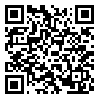Background and Aim: Incomplete root development caused by trauma ,caries, or pulpal pathosis requires special attention and treatment . Although calcium hydroxide apexification has been used successfully for years but it requires patient cooperation and multiple appointments . Single visit apexification with MTA has been used in recent years. The purpose of this study was to compare bacterial microleakage of two types of MTA (Made in Iran and Brazil) applied as apical barrier in open apex teeth.
Materials and Methods: 48 single root teeth were used in this experimental in vitro study. Teeth apices were prepared as open apex teeth. For canal obturation the 4mm of root end was filled with 2 types of MTA (white Iranian MTA salami co. Iran and Angelus MTA Angelus Brazil) from coronal access. Teeth were mounted in self-cured acryl and put in BHI microbial culture. A suspension of Staphylococcus epidermidis was injected from coronal area into the root canals.The teeth were incubated and examined every 24 hours for microbial microleakage, indicated as turbidity in culture. Data were analyzed using Fisher exact test with p<0.05 as the level of significance.
Results: Microleakage appeared after 15 days in all Iranian and after 17 days in Angelus MTA samples.There was no significant difference between microleakage of two types of MTA (P = 0.48).
Conclusion: Based on the results of this study, there was no significant difference between microleakage of Iranian and Angelus MTA. If further studies confirm other physical, chemical, biological and sealing properties of Iranian MTA, it could be recommended for clinical application
Received: 2006/12/30 | Accepted: 2007/12/18 | Published: 2013/08/19
| Rights and Permissions | |
 |
This work is licensed under a Creative Commons Attribution-NonCommercial 4.0 International License. |


